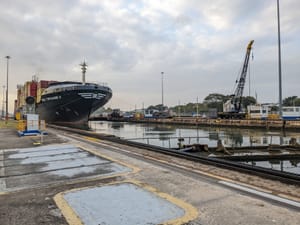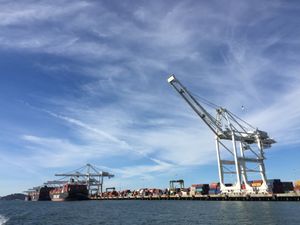Last week, I wrote about how the Panama Canal works and touched on how the reservoirs are managed. This week, let’s take a closer look at how the canal authority, ACP, is adjusting its operations to get through this year’s drought. Panama has just entered the dry season, and will need to carefully ration water until April or May. Until then, every ship that passes through the canal will deplete the already diminished reserves in the two lakes that fill the locks, generate electricity, and provide drinking water for nearby cities. ACP has a laser focus on conserving water and has implemented restrictions on the maximum draft for vessels, begun charging water surcharge fees, stopped hydroelectricity generation, and for the first time, limited the number of transits per day.
First, an incredibly quick history lesson on ACP: The Autoridad del Canal de Panamá is the government agency that administers canal operations. ACP began its work at the turn of the millennium, when the United States handed over control of the canal to Panama, and now functions at arm’s length from the Panamanian Government.
The reasons behind the handover are complex. The government of Panama had never been happy with the terms the canal was built under, and petitioned for a new treaty for decades. This issue came to a head in 1964, when a dispute about Panamanian sovereignty erupted into violence between Panamanians, US Canal Zone residents, and Canal Zone police. Panama then broke diplomatic relations with the United States until they came to the negotiating table four months later.
Negotiations did lead to a new agreement between the two countries: the 1977 Torrijos–Carter Treaties. The US’s decision to rescind control of the canal wasn’t altogether an altruistic move. As Noel Maurer and Carlos Yu explain in The Big Ditch, by the 1960s the canal was less valuable to the US than it had once been:
The strategic and economic value of US ownership of the Panama Canal declined after WWII. The strategic benefits proved chimerical. The economic benefits fell as domestic cargoes made up less and less of the traffic through the canal, lured away by falling railroad and trucking costs.
The new treaties guaranteed ongoing neutrality of the canal, allowing the US to keep much of its strategic and economic benefits without operating it, and with the added benefit of mending its strained relationship with Panama. Panama was finally able to control the entirety of its territory and reap the economic benefits of the canal. Per the treaty, the transition from US to Panamanian ownership began in 1979 with the creation of the Panama Canal Commission, a joint US–Panama agency that worked to transition operations. ACP superseded the commission in 1999, marking the moment Panama took full control of the canal.
When this transition began, the canal was “barely a money making operation.” This trend was quickly turned around. Maurer and Yu explain how the Panama Canal Commission and then ACP oversaw a management revolution, overhauled the toll structure, and made long-term investments in the canal. In 1999, the canal had made just $138.1 million. By 2006 it made $569.7 million, and in 2023, $4.97 billion. Additional revenue was funneled into capital improvements, but also meant increased profits for its sole shareholder: the Republic of Panama.
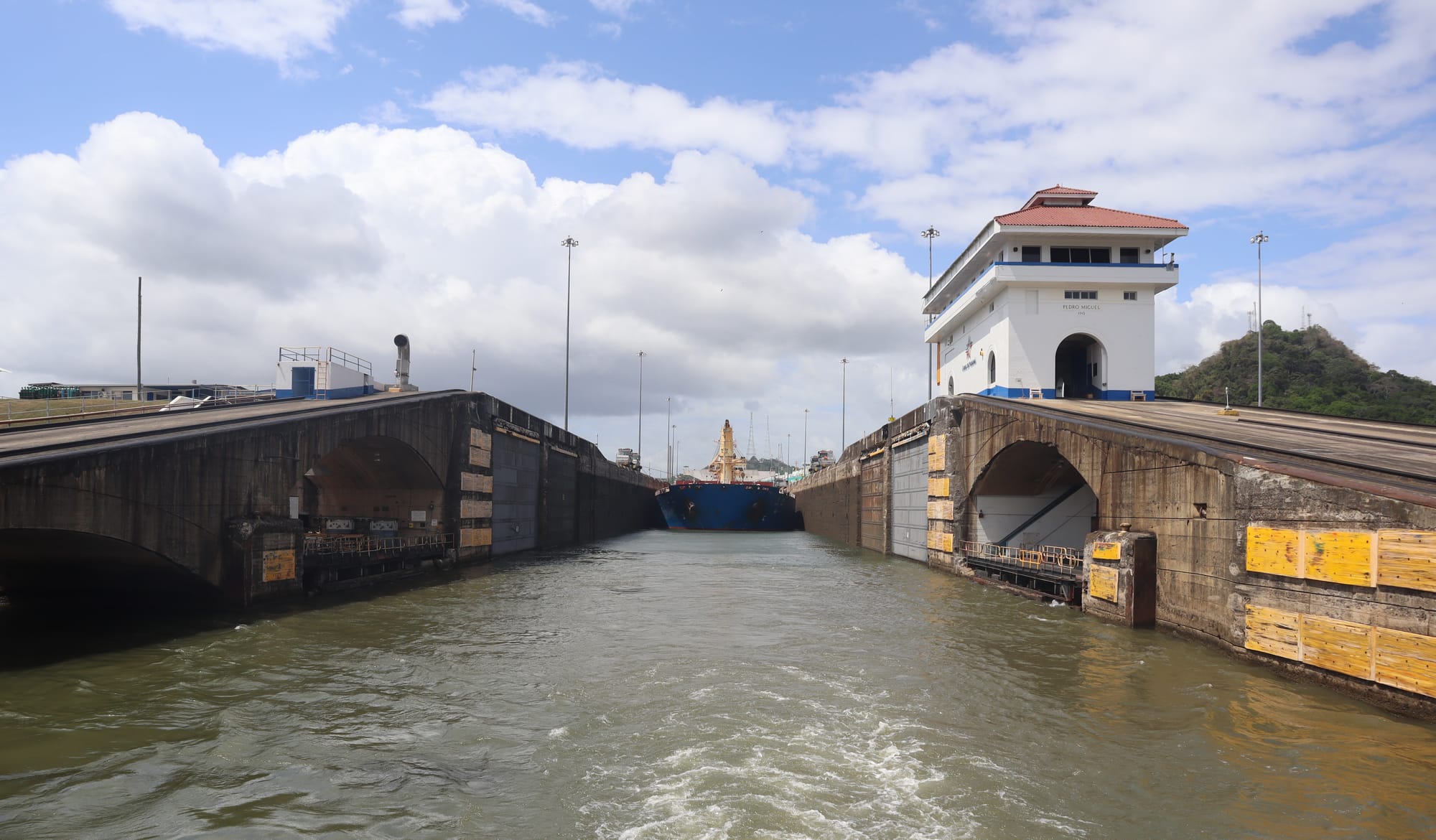
The biggest investment ACP has made is to add a new, larger, set of locks to the canal. This expansion was approved by a referendum in 2006, was completed in 2016, and cost $5.25 billion. This third set of locks expanded the capacity of the canal overall: not only can more ships move through the canal thanks to added capacity, but much larger ships can now cross. The larger locks defined a standard, Neopanamax. During expansion, ACP also deepened the navigation channels and increased Gatun Lake’s level by 45 centimeters.

Even with the new lane, the capacity of the canal’s locks is the primary bottleneck for canal operations. Getting vessels into position and filling the locks is pretty slow work; every boat I saw move through took at least an hour at each lock. The expanded canal does use more water overall, but as ACP hydrologist Erick Córdoba explained, most years there is enough to go around. With the current drought, though, fresh water has become the bottleneck – and ACP has been implementing water-saving measures for over a year.
Let’s take a look at some of the tactics ACP uses to conserve water.
Cross Filling
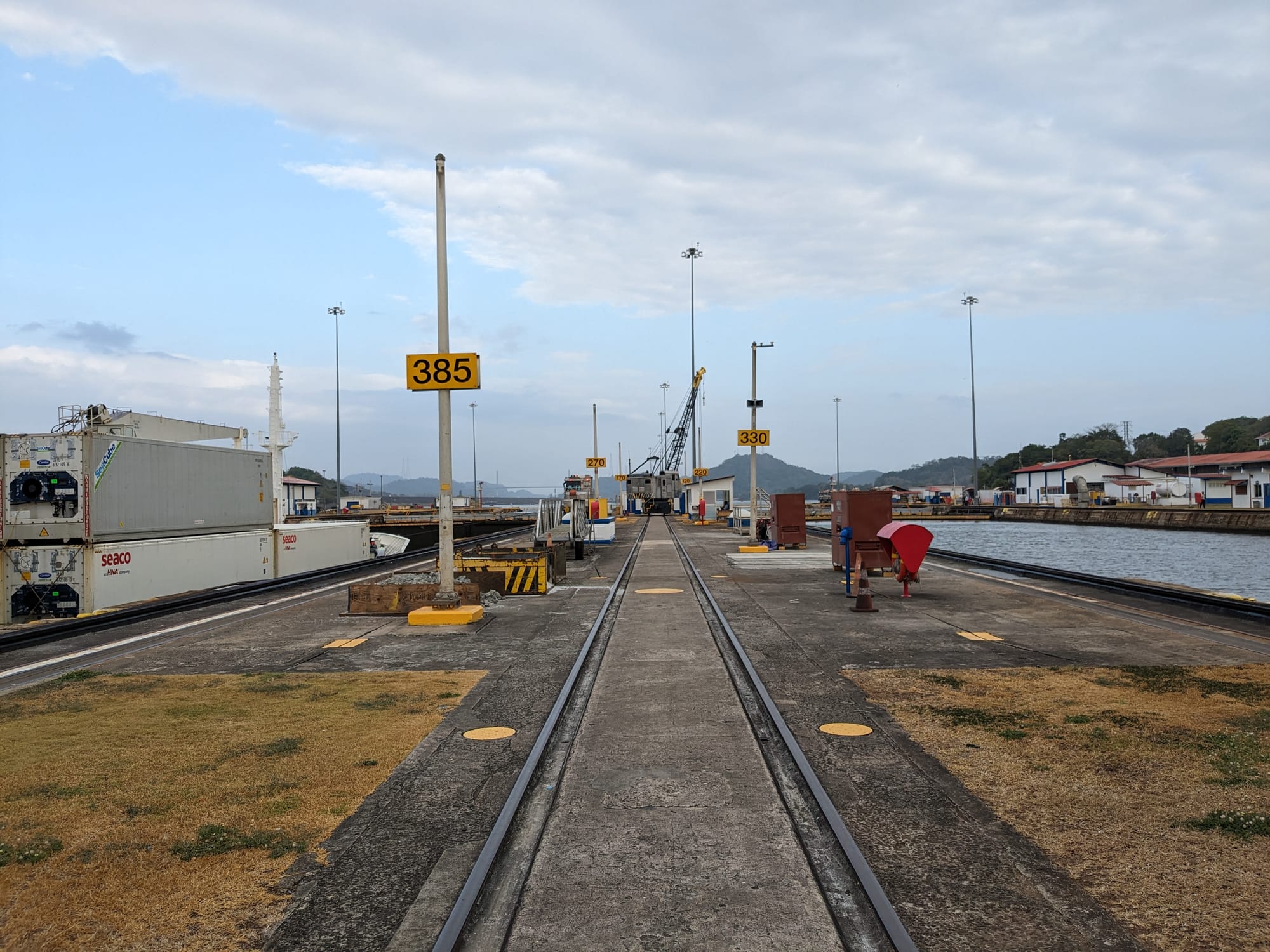
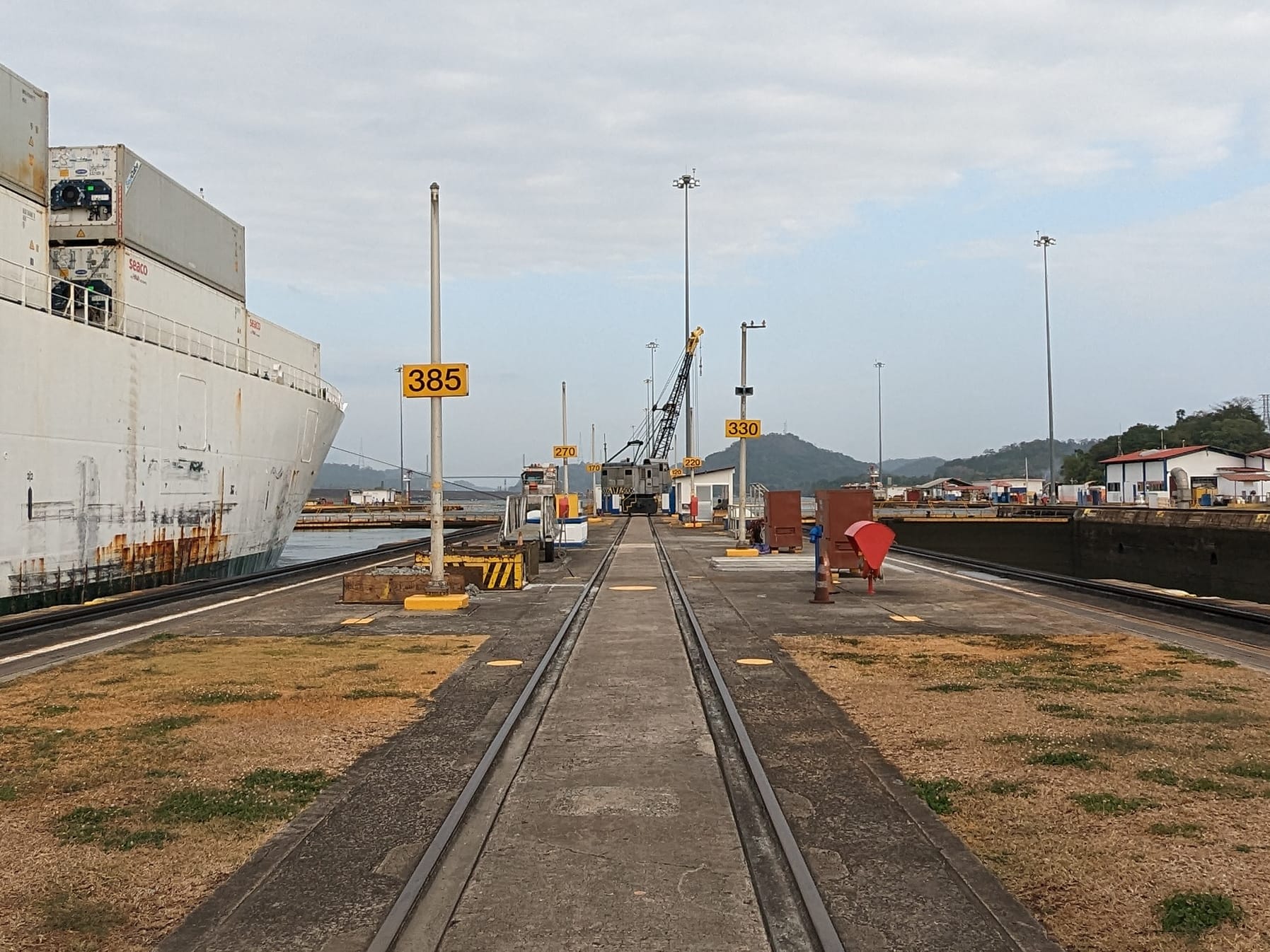
Cross filling the Miraflores locks. In the first photo, the vessel Ice Runner, in the left lock chamber, is at sea level; the empty lock chamber on the right is level with Miraflores Lake. In the second photo, the water from the chamber on the right has been released into the chamber on the left, lifting Ice Runner without releasing any fresh water into the Pacific Ocean.
The original Panamax locks have two lanes, with chambers parallel to each other. ACP usually fills each of these lanes independently, which is to say that each set of locks takes in water from the lake above and then releases the water to the ocean. However, to save water they’ve begun cross filling the chambers, sending water between the two lanes. This technique moves water from one chamber to another using subterranean culverts. These culverts have always been in place, but have only recently been used to conserve fresh water.
Cross filling is complex because it requires intense coordination and scheduling to get all of the vessels in place at the right time. The operations team coordinates with ACP pilots and client boat captains to move everyone through the systems together. Compared to normal operations, cross filling creates delays – but saves about six lockages worth of water per day.
Multimodal Crossing
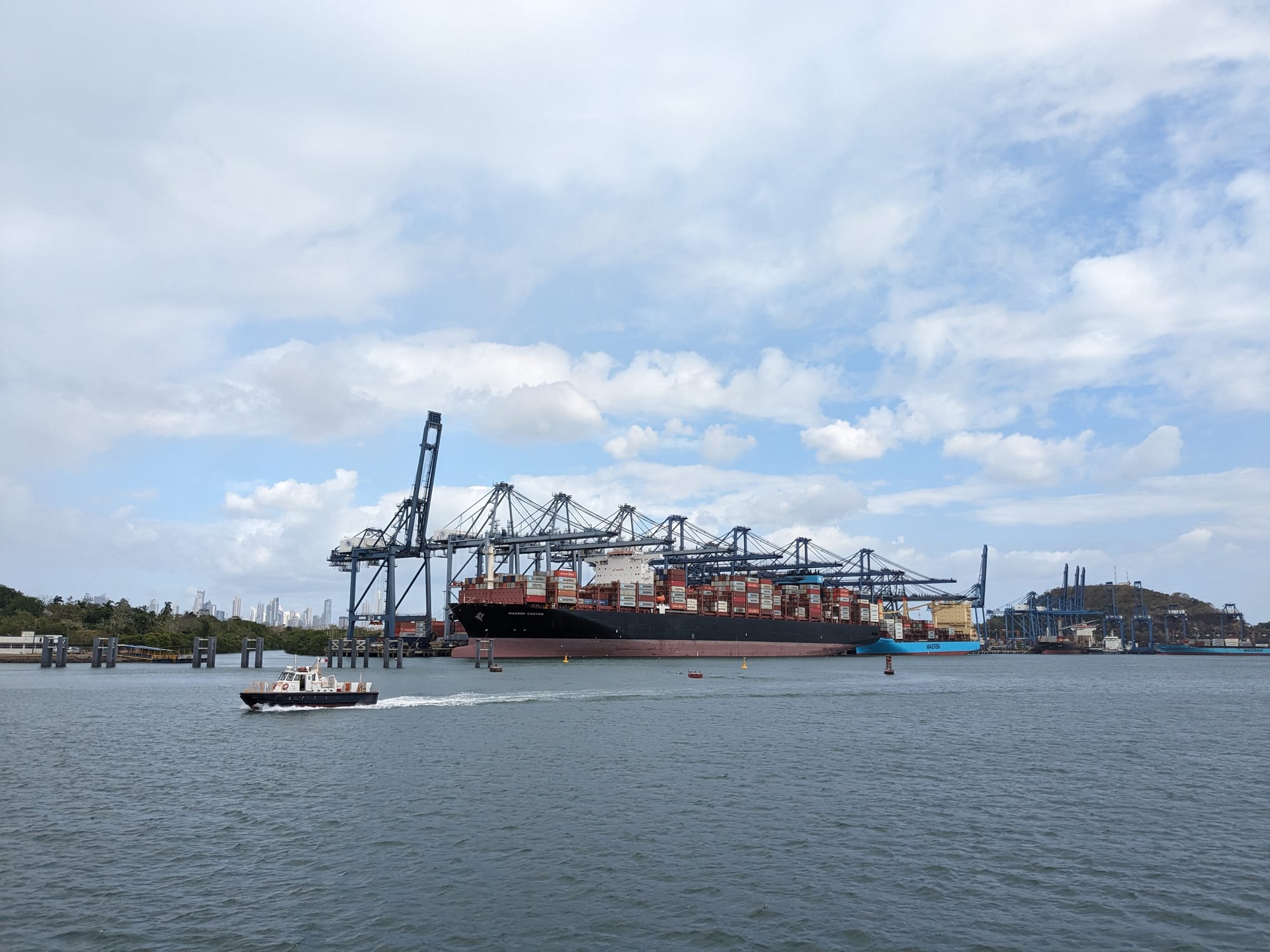
A vessel's draft is the distance between the lowest point of the boat and the waterline. Given the current low water level in Gatun Lake, ACP is enforcing draft restrictions: Normally, boats with up to a 15.2-meter draft may use the canal, but right now they’re limited to 13.6 meters. This is a problem if you want to haul thousands of containers through the lake, but lightening a boat’s load will decrease its draft. As a result, some freight companies are unloading a portion of their vessels’ containers at the ports on either side of the canal and sending them across the isthmus by rail. The lighter ships can then float higher in the lake, adhering to the draft restrictions.
If you have a lot of vessels to play with, you can avoid sending your ships through the canal altogether, and use the railway as a leg in a multimodal relay race. Maersk has started unloading its ships on either side of the isthmus, handing the cargo off to the railway, then tapping in a different ship on the other side to complete the relay.
This all keeps the flow of goods moving, but it’s not as good an outcome for ACP. A portion of the toll a containership pays to cross the canal is determined by how many containers are on deck, so ACP is missing out on some revenue when the boats unload. Instead, that money goes to Kansas City Southern and Mi-Jack Products, the companies behind the Panama Canal Railway Company.
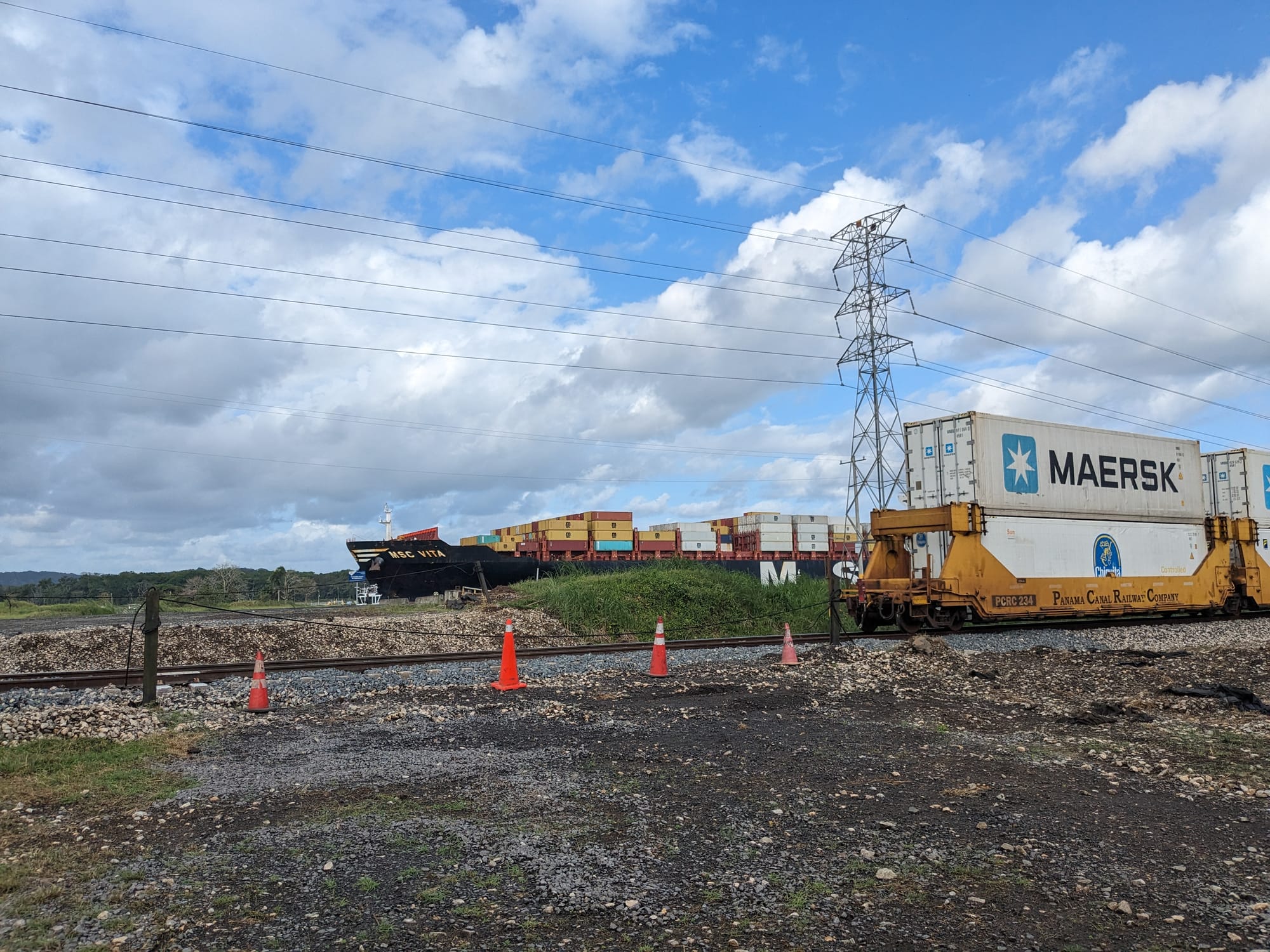
Water Saving Basins
The Neopanamax locks are considerably larger than the original Panamax locks, with 2.4 times the capacity. However, they were designed with water savings in mind and each chamber is accompanied by three water-saving basins that can be used to recycle water. Water from the locks drains into the basins, and can be used again to fill the next lowest chamber before washing out to sea. With the basins, a Neopanamax transit can use 7% less water than a Panamax transit – despite its much greater volume. You can learn more about how the basins work in this video.
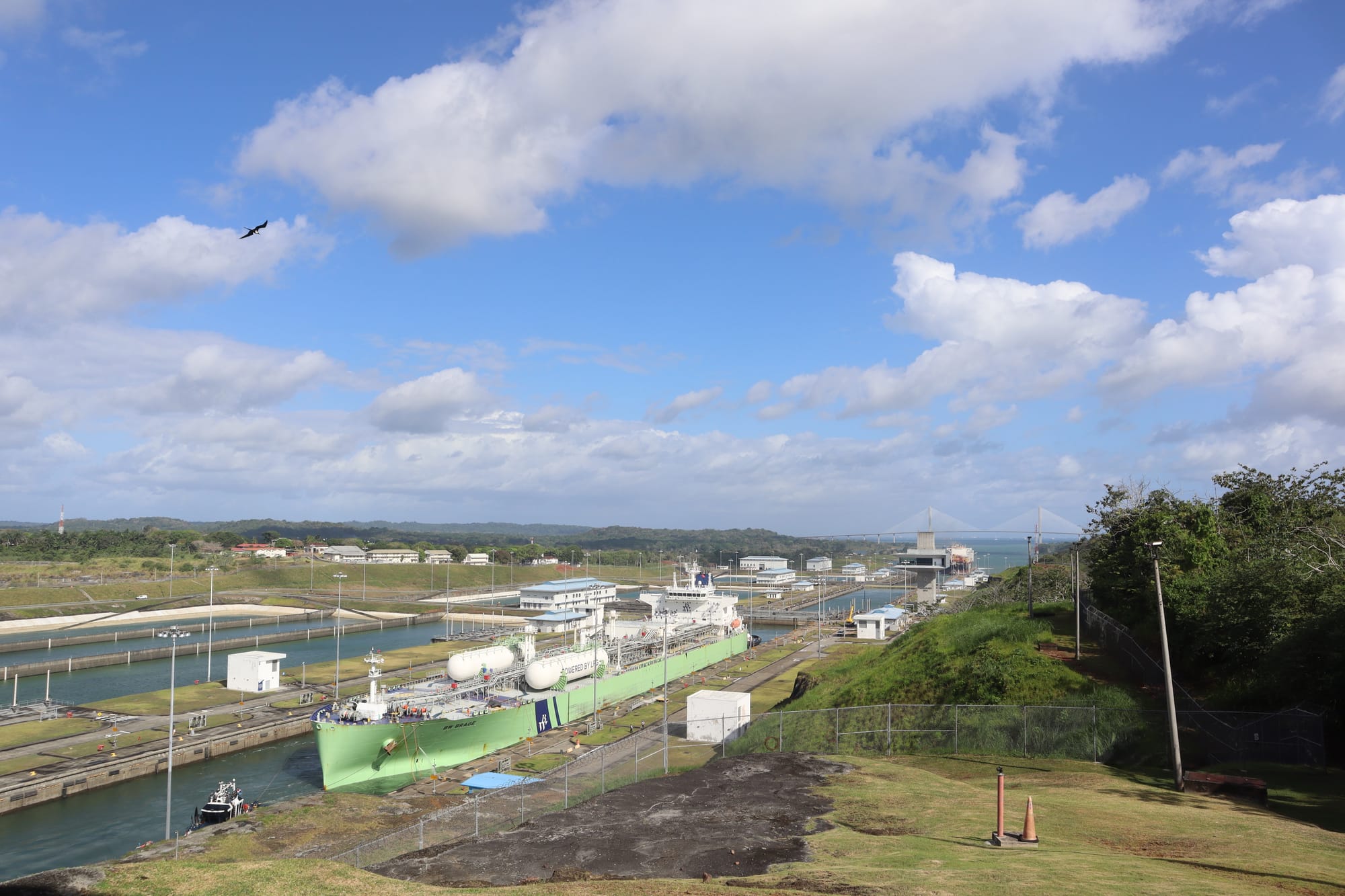
Unfortunately, ACP is not able to use the water-saving basins all of the time, as they end up concentrating salt water into Gatun Lake. It’s worth noting that some salt water has always entered the Panama Canal; even with the old locks, salt water is transported upward as ships move up and down. However, while the water-saving basins reduce fresh water usage, they also allow greater volumes of salt water to penetrate Gatun Lake. The water that fills the basins is taken from the bottom layer of the adjacent lock, where denser salt water settles. This means the water that gets recycled has high salinity, and eventually works its way up through the locks and into the lake.
This problem was identified in early engineering reports on the canal expansion, and it remains unclear to me why it wasn’t addressed at the design stage. As built, the more the water-saving basins are used, the more salt enters Gatun Lake – and because Gatun Lake is also the source of drinking water for many Panamanians, the use of the basins is limited. ACP is constitutionally required to prioritize water quality above canal operations, and ACP’s water management team meets with the operations team several times a week to track salinity and determine when the basins can be used. ACP’s head administrator, Dr. Ricaurte Vásquez Morales, claims the basins are used to the greatest possible extent.
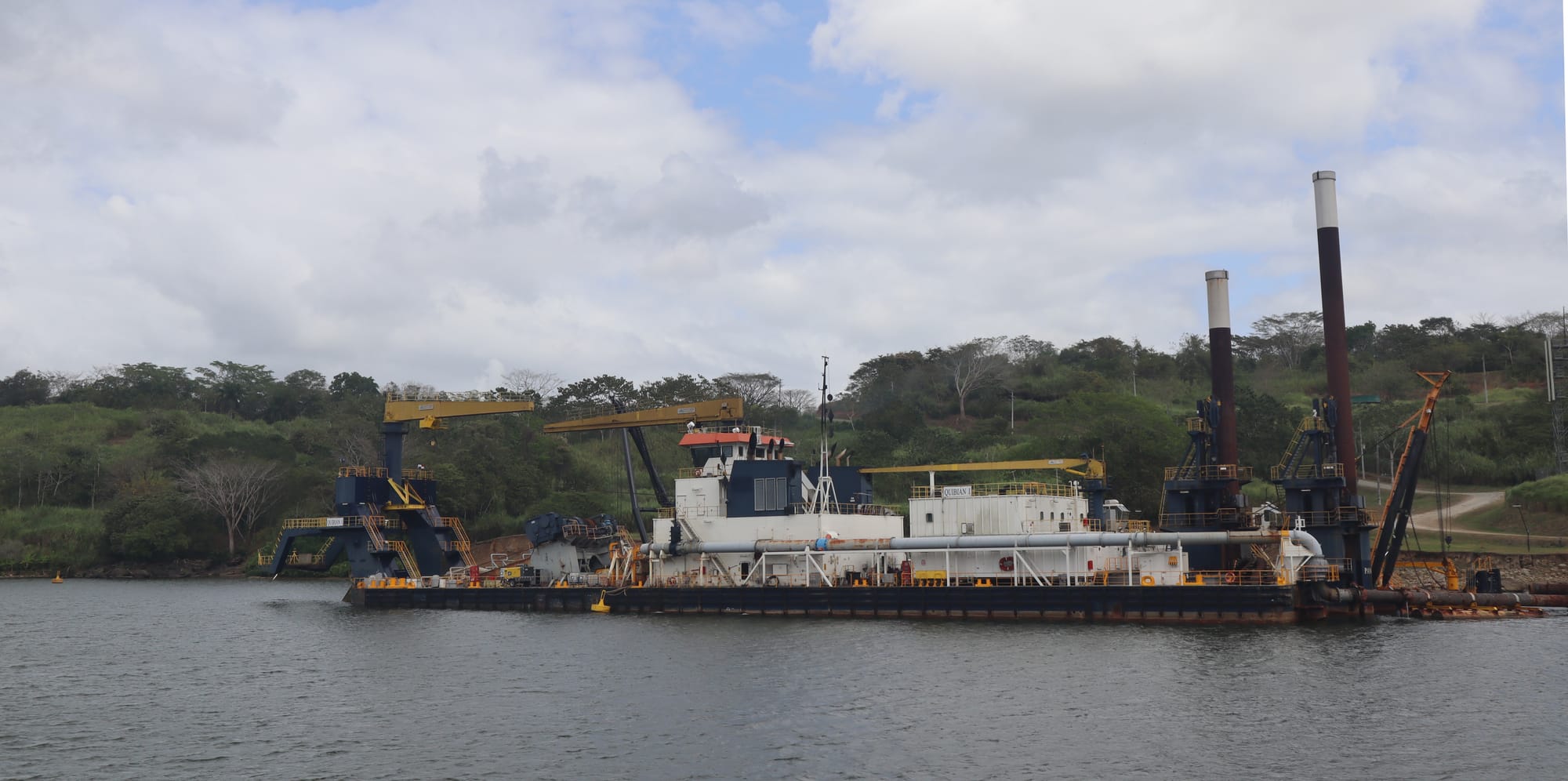
Because humans cannot drink salt water, and drinking water is drawn from the canal and its associated reservoirs, ACP is looking for ways to both maximize use of the water-saving basins while also minimizing salinity at the points where drinking water is collected. So, as Dr. Morales explained, “instead of addressing the amount of salinity in the lake, we’re going to be focusing on salinity at the water treatment plants.” This is to say, ACP will identify locations in the lake where salinity is lowest, and draw drinking water from those locations. The solution right now is effectively slurping up water with a gigantic straw at the mouth of the Chagres River, and piping it 15 kilometers to the Paraiso water treatment plant (which sits right outside of the Cocolí Locks, and is therefore in a high salinity area). In the long term, ACP plans to build a water treatment plant where the temporary intake is, ensuring the water-saving basins can be employed full-time.
Creating Another Reservoir
Further out into the future, ACP is hoping to build another reservoir to secure more water for the canal. The Indio River is west of the canal, currently outside of the area defined as its basin. Studies on the project began in 1999, and it’s estimated that it would provide enough water for an additional 8-10 lockages a day.
This plan is not without its challenges – and challengers. When the canal was first built and Lake Gatun first flooded, it displaced some 40,000 residents. The new reservoir would require the relocation of six towns and villages, and the people who live near the Indio River today are not willing to meet the same fate. ACP had initially pushed for the Indio reservoir to be built alongside the 2006 canal expansion, but the locals successfully resisted. The referendum that approved the new locks to move also forbade the development of new reservoirs. ACP recently submitted a proposal to change the law and get permission to dam more rivers, but residents continue to resist development and the project’s future remains unclear.
It’s a reminder that, as Deb Chachra has written about so eloquently, all infrastructure systems define some people who benefit, and some people who are harmed. The Panama Canal, like Quebec’s hydroelectric infrastructure, reshaped a landscape, flooding lands where plants, animals, and a whole lot of people once lived. With all of my research into infrastructure systems, I’ve hoped to find something that was unambiguously good – some solution to moving energy and goods around that might point toward the bright decarbonized future we need to transition to. But it’s tradeoffs all the way down, and even infrastructure systems that work closely with nature are still defined by the logic of controlling nature. When I visited Barro Colorado Island, the Smithsonian research site in the middle of the canal, I took a hike with guide Natalie Ferro Lozano. Natalie is a soil scientist and PhD candidate who has been working on BCI for over a decade. I asked her whether she thought the canal had been good or bad for the rainforest. She said it’s impossible to say, and that “good and bad impose such a human perspective.” The ecosystem has been shifting for millions of years and it will continue to change. Every change benefits some species but not others. There is no easy answer written on the landscape, so instead we’re left considering all of the pieces and applying our human heuristics.
When I first started spotting headlines about water shortages at the Panama Canal, it struck me as something shocking that emerged out of the blue. But just because these challenges are news to me doesn’t mean the problems aren’t longstanding or well-studied. Seeking solutions for water scarcity in the Panama Canal is a decades-old project, basically as old as the canal itself. There are tradeoffs to be made, and they will be negotiated between Panamanians, ACP, market dynamics, and the changing climate. Droughts are a cyclical condition – this won’t be the last dry year, and by the time the next one happens those of us who are disconnected from the daily flows of the canal might be surprised all over again. In the meantime, ACP is tasked with finding ways to make dry years more tolerable for canal operations, protecting the water quality for residents, and continuing to bring in billions of dollars in revenue for the Republic of Panama.


